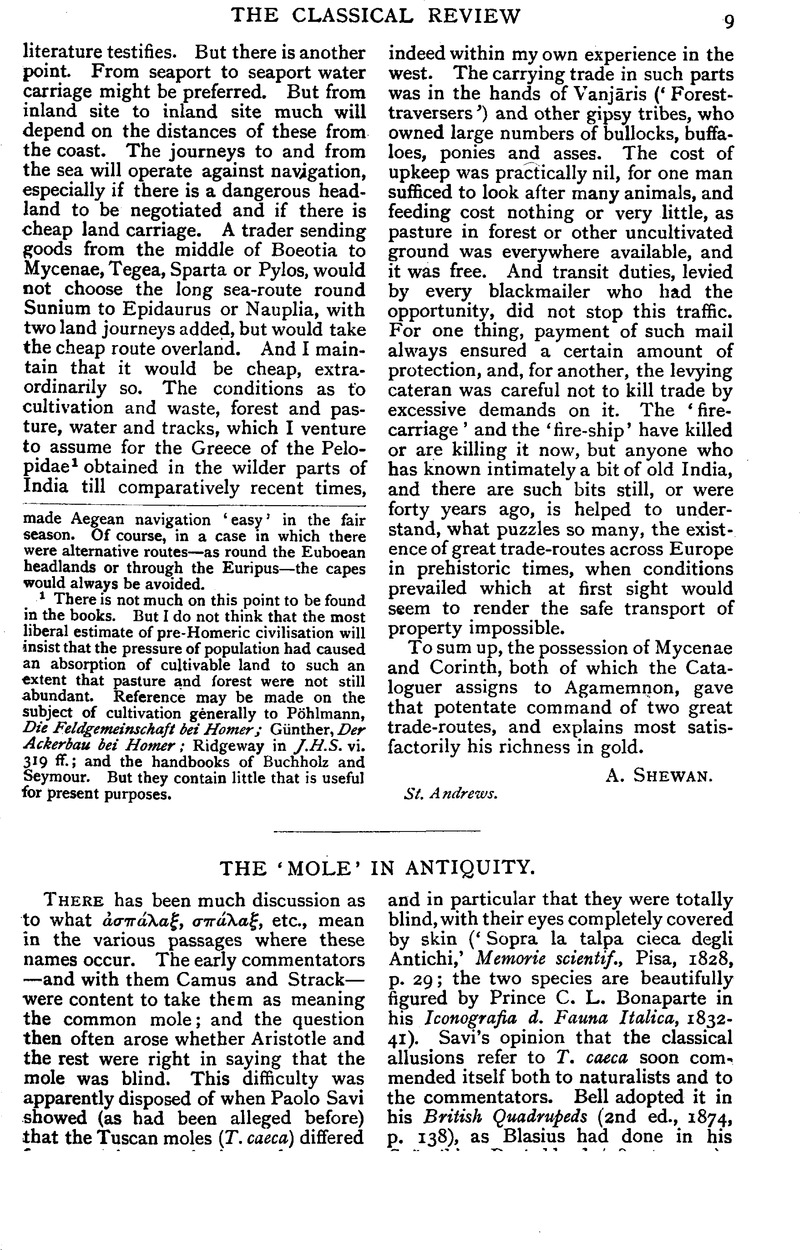No CrossRef data available.
Published online by Cambridge University Press: 27 October 2009

page 10 note 1 Cf. Rzaczynski, , Auctuarium Hist. Nat. Poloniae, 1745, P. 326Google Scholar; Güldenstädt, , in Nov. Comm. Ac. Sci. Petrop., xiv. 1770, pp. 409–440Google Scholar; Pallas, , Zoographia Rosso-asiatica, i. p. 159, 1811Google Scholar; and especially Olivier, G. A., Voy. dans l'Empire Othoman, etc., iv. pp. 198–209, An 12 (1793–94).Google Scholar
page 10 note 2 Cf. Olivier, p. 208; ‘Il est très friand … d'un colchique à fleurs blanches, très-nombreuses, qui fleurit au premier printems … Il se nourrit également de la racine de presquetous les végétaux qui croissent spontanément ou qui sont cultivés dans les lieux oú il est établi.’
page 11 note 1 Mr. Oldfield Thomas tells me that specimens have been sent home lately, by officers of the R.A.M.C., from Salonika. Recent writers distinguish many species of Spalax, two of which are recorded from Greece (cf. B.M. Cat. of Mammals of IV. Europe, 1912, pp. 887, 1000).
page 11 note 2 These πóροι were doubtless the large nerves, passing through the sub-orbital foramina, on their way to the muzzle. My note ad loc. in the Oxford translation of H.A. is wrong; for χανλι⋯δοντες are not necessarily ‘eye-teeth’, but may quite well apply to the tusk-like incisors of Spalax.